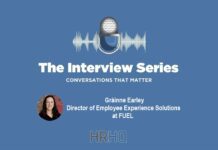by Lena Justenhoven, Director Product Solutions bei cut-e Group
The world of work is changing. Machine learning, AI, automation. Technological advancements are moving at a dizzying pace.
For the average worker, the half-life of learned skills at work has dropped to about five years. Digital readiness — being prepared to work in this environment of rapidly evolving technology and skill sets — is crucial for the workforce of the future.
These changes bring new opportunities, new ways of doing business and a much more complex business world to navigate.
Employees need to be able to adapt to this new environment, to adapt to these changes, so they can innovate and take advantage of emerging opportunities. No longer can workers come into the workforce with a stable and defined set of skills and knowledge. They have to have the ability to learn new things. They need learnability.
Here’s why learnability matters for your workforce — and how you can spot it in candidates and employees.
Why Learnability Matters
In this world of technological innovation and advancement, it is increasingly difficult for companies to hire for a specific job and a specific skill set. We simply don’t know what a job will look like 10 years, five years or even three years out.
Traditionally, people would prepare for their careers by going through a degree program that gave them the specific skills they needed. But people now follow much less predetermined and clear career paths. For many people, the careers they trained for don’t exist anymore or have changed so much that their roles and the skills needed to be successful no longer suffices.
Modern workers — and employers — can’t know what skills they will need in the future. The tiered traditional way of educating someone no longer works. Workers need to adopt a lifelong learning approach to training so they can adapt to changing work environments and continually upskill and re-skill to stay relevant.
And that’s where learnability comes in. Learnability indicates a person’s level of ability to learn new skills. Would that person be happy to take on new challenges and learn new ways of doing things?
Do they have a growth mindset? Are they open to constructive feedback? How comfortable are they with not knowing everything, and how aware are they of what they don’t know?
When you have a workforce that is able and happy to learn new things, your company can adapt and thrive in a changing marketplace. You can provide transition pathways within an organization to help current employees learn new skills and advance. You can help them transition into new roles and everyone benefits.
How We Can Identify Learnability
When it comes to learnability, though, there’s the cognitive ability to learn new things and the willingness to engage in that process. Most people have the cognitive ability, but it’s the behavioural component of learnability that is the key indicator we need to pay most attention to.
One of the difficulties in identifying people with this trait is that many people will express an interest in learning new skills and growing in their profession because they recognize that the behaviour is socially desirable. Few people are willing to admit that they hate learning or don’t want to grow.
So, how can you really tell if someone is genuinely open and receptive to learning?
Different types of assessment tools can help you do just that. Take for example Aon’s Adaptive Employee Personality Test that compares statements matched based on desirability. Computer adaptive testing and paired item display can eliminate responding based on social desirability. This technology can help overcome item types prone to faking and help employers learn a great deal about the true level of the applicant’s learnability.
Assessing candidates that have this core ability of learning, who are happy to learn and continue to grow and develop in their skills after you hire them, gives companies a competitive advantage. If your workforce is full of people with learnability, you can transition them into new roles and new jobs when you need them easily. You won’t be at the mercy of an outside talent pool and attracting new talent to meet your workforce needs.











































